Good stuff here. The truth about the GDP as a measurement. Some fantastic and delicious Caribbean food. Stories about cat rescues. A reality check about nuclear war. And some personal stories that many of us can relate to.
There’s also a very disturbing report about the United States mRNA injections and what is going on.
We will start here.
Pentagon, Chinese analysts agree US can’t win in Taiwan Strait
.
China’s satellite coverage in the Western Pacific has doubled since 2018, the Pentagon reported last week in its annual assessment of the Chinese military. That gives China the ability to detect American surface ships with an array of sensors that can guide its 2,000 land-based missiles to moving targets, including US aircraft carriers.
The Defense Department’s November 29 report “Military and Security Developments Involving the People’s Republic of China” reflects a grimly realistic rethinking of China’s military capacity in its home theater.
China hawk Elbridge Colby, a prominent advocate of a Western Pacific military buildup to deny China access to its adjacent seas, tweeted on November 6, “Senior flag officers are saying we’re on a trajectory to get crushed in a war with China, which would likely be the most important war since WWII, God forbid.”
The strategic takeaway is that the United States cannot win a firefight close to China’s coast, and can’t defend Taiwan whether it wants to or not. That view in the Joe Biden administration’s Department of Defense (DOD) persuaded the president to discuss “guardrails” against military confrontation in his November summit with his Chinese counterpart Xi Jinping.
Republican hawks appear to have come to the same conclusion. The United States will enact a scorched-earth policy in Taiwan, destroying its semiconductor industry, if the PRC seizes the island, former Trump national security adviser Robert O’Brien told a conference at the Richard Nixon Foundation on November 10, reports army-technology.com.
“If China takes Taiwan and takes those factories intact – which I don’t think we would ever allow – they have a monopoly over chips the way OPEC has a monopoly, or even more than the way OPEC has a monopoly over oil,” O’Brien said.
A much-read paper by two Army War College professors published this year proposes that “the United States and Taiwan should lay plans for a targeted scorched-earth strategy that would render Taiwan not just unattractive if ever seized by force, but positively costly to maintain.”
“This could be done most effectively by threatening to destroy facilities belonging to the Taiwan Semiconductor Manufacturing Company, the most important chipmaker in the world and China’s most important supplier.”
O’Brien evidently agrees with the Pentagon’s assessment that the US can’t win a war in the Taiwan Strait, proposing – apropos of the Vietnam War’s most celebrated sound bite – to destroy the island in order to save it.
Anti-ship missiles are the 21st-century equivalent of the torpedo and dive bombers that banished the battleship from military budgets after the 1941 sinking of the Bismarck by the British and the sinking of the Repulse and the Prince of Wales by the Japanese. Surface ships, including aircraft carriers, can’t defend against modern missiles that can downlink guidance data from reconnaissance satellites.
The DOD report states that the PLA Rocket Force’s “conventionally armed CSS-5 Mod 5 (DF-21D) ASBM variant gives the PLA the capability to conduct long-range precision strikes against ships, including aircraft carriers, out to the Western Pacific.”
“The [People’s Liberation Army Air Force’s] ground-based missile forces complement the air and sea-based precision strike capabilities of the PLAAF and PLAN.… DF-21D has a range exceeding 1,500 km, is fitted with a maneuverable reentry vehicle (MaRV), and is reportedly capable of rapidly reloading in the field.
“The PLARF continues to grow its inventory of DF-26 IRBMs, which it first revealed in 2015 and fielded in 2016. The multi-role DF-26 is designed to rapidly swap conventional and nuclear warheads and is capable of conducting precision land-attack and anti-ship strikes in the Western Pacific, the Indian Ocean, and the South China Sea from mainland China.
“In 2020, China fired anti-ship ballistic missiles against a moving target in the South China Sea.”
China tested these weapons thoroughly, the Pentagon report adds:
“In 2021, the PLARF launched approximately 135 ballistic missiles for testing and training, more than the rest of the world combined excluding ballistic missile employment in conflict zones. The DF-17 passed several tests successfully and is deployed operationally.
“While the DF-17 is primarily a conventional platform, it may be equipped with nuclear warheads. In 2020, a PRC-based military expert described the primary purpose of the DF-17 as striking foreign military bases and fleets in the Western Pacific.”
Key to the effectiveness of anti-ship missiles is satellite intelligence and electronic warfare measures. As the Pentagon reports:
“China employs a robust space-based ISR [intelligence/surveillance/reconnaissance] capability designed to enhance its worldwide situational awareness. Used for military and civilian remote sensing and mapping, terrestrial and maritime surveillance, and intelligence collection, China’s ISR satellites are capable of providing electro-optical and synthetic aperture radar (SAR) imagery as well as electronic and signals intelligence data.”
Most important:
“As of the end of 2021, China’s ISR satellite fleet contained more than 260 systems – a quantity second only to the United States, and nearly doubling China’s in-orbit systems since 2018.”
Satellite signals can be jammed or spoofed (misdirected to show incorrect coordinates), but
“The PLA continues to invest in improving its capabilities in space-based intelligence, surveillance, and reconnaissance (ISR), satellite communication, and satellite navigation … the PRC continues to develop a variety of counter-space capabilities designed to limit or prevent an adversary’s use of space-based assets during crisis or conflict.
“In addition to the development of directed energy weapons and satellite jammers, the PLA has an operational ground-based anti-satellite (ASAT) missile intended to target low-Earth orbit satellites, and the PRC probably intends to pursue additional ASAT weapons capable of destroying satellites up to geosynchronous Earth orbit.
“PLA [electronic warfare] units routinely train to conduct jamming and anti-jamming operations against multiple communication and radar systems and Global Positioning System (GPS) satellite systems during force-on-force exercises.
“These exercises test operational units’ understanding of EW weapons, equipment, and procedures and they also enable operators to improve confidence in their ability to operate effectively in a complex electromagnetic environment.”
China’s military has improved quality as well as quantity, according to the Pentagon:
“Recent improvements to China’s space-based ISR capabilities emphasize the development, procurement, and use of increasingly capable satellites with digital camera technology as well as space-based radar for all-weather, 24-hour coverage.
“These improvements increase China’s monitoring capabilities – including observation of US aircraft carriers, expeditionary strike groups, and deployed air wings. Space capabilities will enhance potential PLA military operations farther from the Chinese coast.”
Overall, the Pentagon’s readout on China’s missile and satellite capability is virtually identical to the estimation of Chinese analysts, for example, the widely read military columnist Chen Feng in the prominent Chinese website “The Observer” (guancha.cn). In a November 27 report, Chen explained why an array of small satellites can achieve precise real-time target location:
“Small satellites are not only small, lightweight, and low-cost, but also operate in low orbits. In terms of space ISR, one is worth nearly three. This is true for optical and radar imaging, as well as for signal interception. So the actual reconnaissance capability of small satellites is no weaker than large satellites, and commercial Synthetic Aperture Radar small satellites in the United States and China are able to reach 0.5-meter resolution.
“Optical imaging has always had the advantage of high resolution, which is also a very mature technology. In the era of digital imaging, there is no longer a need to use the re-entry capsule to send the film back to the ground when the satellite is overhead.”
Synthetic aperture radar, Chen explains, “is not applicable to moving targets, but most of the intelligence can be interpreted from still images, and the similarities and movement can be inferred from differences between the before and after still images can also be inferred from the movement.”
A lead satellite may detect a suspicious object, and follow-up satellites “can be switched to a detailed investigation mode, and relay the results of detailed investigation.” Other satellites with electromagnetic rather than optical sensors can conduct real-time triangulation.
In addition to its satellite ISR capability, Chen says, the other half of China’s reconnaissance capability consists of “unmanned aircraft, unmanned boats, submarines, and networked land-based radar, and undersea hydroacoustic monitoring.”
China, Chen concludes, does not yet have global ISR capability, “but theater coverage has been achieved.”
In the past, the US Navy has insisted that a combination of electronic warfare measures and anti-missile defenses can defend US capital ships against Chinese attack. This year, the navy’s top officer Admiral Jonathan Greenert told reporters that a combination of spoofing (feeding false position coordinates to an incoming missile), masking electronic emissions, and anti-missile systems like Aegis can defend US carriers.
But as Gabriel Honrada reported on August 14, US anti-missile systems like Aegis or Patriot aren’t effective against missiles honing in from a high trajectory. China’s DF-21 and other anti-ship missiles are designed to ascend to the stratosphere and strike vertically.
Electronic countermeasures, moreover, are less effective against multiple sensors. China’s tiered system of sequenced optical, as well as electromagnetic reconnaissance combined with air and sea drones, is getting harder, if not impossible, to spoof. And China’s missile force is so large that it can inflict devastating damage even with a high error rate.
Apart from its formidable inventory of conventional missiles, China has developed hypersonic glide vehicles that hug the ground and maneuver at the speed of intercontinental ballistic missiles, or several times the speed of sound. No conventional missile defense can stop HGVs.
Apart from its missile force, China has about 800 fourth-generation fighters deployed at its coast and close to 200 fifth-generation (stealth) fighters. As the Pentagon report notes, China has corrected the most important deficiency in its domestic warplane production, namely jet engines:
“China’s decades-long efforts to improve domestic aircraft engine production are starting to produce results with the J-10 and J-20 fighters switching to domestically produced WS-10 engines by the end of 2021. China’s first domestically produced high-bypass turbofan, the WS-20, has also entered flight testing on the Y-20 heavy transport and probably will replace imported Russian engines by the end of 2022.”
A noteworthy observation in the new Pentagon report is that China now has only 30,000 marines, compared with a US Marine Corps of about 200,000 including reserves.
Only 200 Chinese marines are deployed outside the country, at China’s sole overseas base in Djibouti.
China has about 14,000 special forces versus an American count of about 75,000. This isn’t consistent with the report’s claim that China wants to “project power globally.”
If the USA starts bombing Taiwan; they will be bombing China. And China will have every right to start bombing New York City. -MM
He Thinks He Can’t Survive Without Our Presence | Poor Cat Gets Glue From a Mouse Trap
Rescued. Happy ending. But what a poor sad sight. OMG!
How To Become a Cat: The Complete Guide

This informative guide has been created by illustrators and book authors Lisa Swerling and Ralph Lazar. We sincerely hope this will help you to achieve your life-long dream to become a cat.
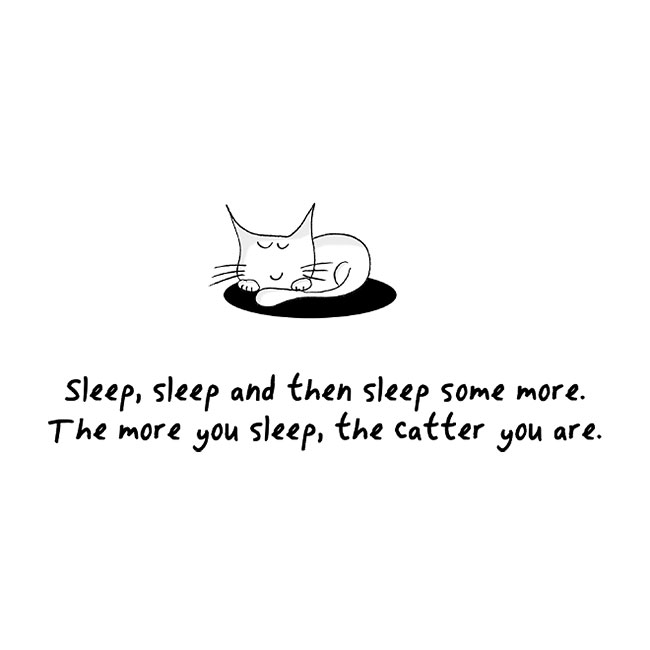









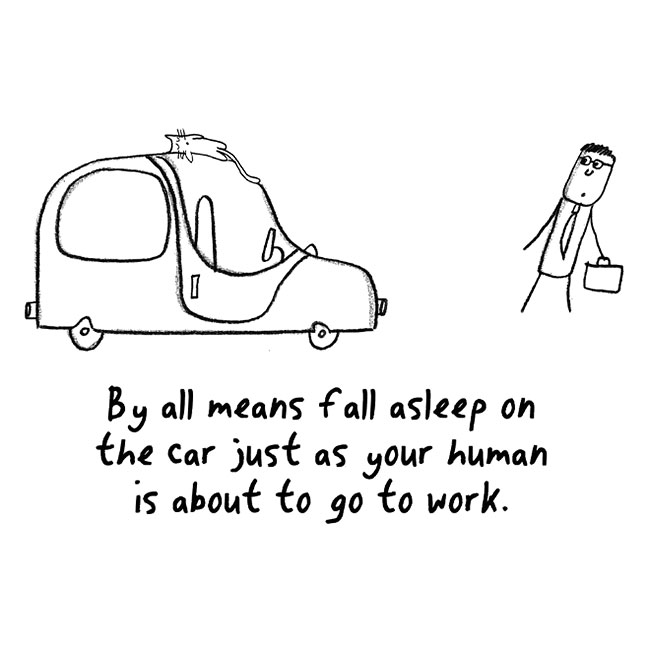








What’s It Like To Date A Woman 25 Years Older Than You?
I dated a lovely woman that was exactly twice my age. I was 25 and she was 50.
She’d been through a terrible, abusive marriage, and had 3 grown children, 2 of which were older than I.
Her ex and her kids treated her like shit and unfortunately she let them.
Together we made a life running a business together that was successful enough for us to afford 2 homes, 3 nice cars, and a 30+ foot house boat.
Eventually I realized that while I had a damn good life, I was not happy.
Age is not just a number. It eventually gets to the point where you can see the huge difference.
I got tired of the Mom jokes and I was totally out of my element when her kids visited. I hated how they treated her and it became a source of contention for us.
Sexually, we were great at first, but that changed quickly as she went through menopause. She was no longer interested in sex and I was a raging 30yr old by then.
We started sleeping apart because her “back hurt” and I was just so comfortable with my life that I didn’t protest.
Things really started to fall apart when I was getting closer to 40 and realized that she just couldn’t keep up with the things I wanted to do in life.
I was taking care of her more and more and I started to resent her for it. Eventually I realized that unless I left I would be miserable.
I told her when I was 38, after 13 years together, that I thought it was time for us to part ways. One of the most difficult things I’ve ever done.
She was totally devastated. So much so that I almost stayed, just to make sure someone would be there to care for her as her health failed.
I begged her to become self reliant and moved out after 6mo. of trying to help her settle her life apart from me.
I moved out of state and told her idiot kids that they needed to help her.
That’s the last time I saw her. I left her with everything. Both the houses and 2 cars and the boat, also the business we’d built together.
Financially she wouldn’t ever have to work again. I started over with a pickup truck and about $2k in the bank.
Caribbean Honey-Spiced Chicken with Mango

Ingredients
- 1/4 cup honey
- 1/4 cup fresh lemon juice
- 2 teaspoons freshly grated lemon peel
- 1 ripe mango, peeled and diced
- 1 small onion, peeled and quartered
- 2 fresh jalapeno peppers, halved and seeded
- 2 teaspoons paprika
- 2 teaspoons vegetable oil
- 1 1/2 teaspoons garlic salt
- 1/2 teaspoon ground cinnamon
- 1/2 teaspoon fresh ground pepper
- 1/2 teaspoon ground allspice
- 4 boneless skinless chicken breast halves
- 1 tablespoon vegetable oil
Instructions
- In a small bowl, combine honey, lemon juice and lemon peel; whisk until well-blended. Remove 1/4 cup of mixture to food processor container; set aside. Add mango to honey lemon mixture in bowl; toss to coat. Store in refrigerator.
- Add onion, jalapenos, paprika, oil, garlic salt, cinnamon, pepper and allspice to honey-lemon mixture in food processor container. Process until very finely chopped, scrape down sides when necessary. Spread mixture evenly over both sides of chicken breasts. Spread oil in 13 x 9-inch baking pan. Arrange chicken breasts in pan.
- Bake at 375 degrees F for 25 to 30 minutes or until cooked through. Remove chicken to serving platter; top with reserved mango.
Soldier Clinically Dead For Over 10 minutes And Was Told Three Huge Things In Heaven -Remarkable NDE I am nearly 80 years old and for the past six months have been watching testimony of near death experiences. Although I'm healthy and have experienced little pain in my life, stories like this give me comfort regarding the idea of death. I go to bed at night feeling peace and know there's a better time coming my way. I live alone and feel quite peaceful... it's a wonderful way to live out the rest of my life.
“Fuel For The Soul”: Outstanding Nostalgic Motorcycle Paintings Of David Uhl

David Uhl is an artist’s artist. His technique, realistic with an impressionistic flair, breathes fantastic life into even the most ordinary of subject matter. He is now among the select few officially licensed fine artists of Harley-Davidson Motor Company.
Having grown up in a fishing village in Michigan, David Uhl draws on both nature and nurture for his artistic ability. His father was an inventor-engineer and most of his family is oriented toward the arts.
After spending his high school years drawing and painting, he received the only scholarship offered to a senior to attend the Colorado Institute of Art. This education allowed him to explore his illustration and life-drawing abilities, which led to projects for such companies as Sony, Hewlett Packard and Coca-Cola.
An avid Harley owner since 1988, Uhl’s passion would soon coincide with his artistic talent. Harley-Davidson Motor Company executives recognized David’s creative talents and introduced him to Segal Fine Art, a licensed publisher of Harley-Davidson fine art. David would now spend endless hours in the Harley-Davidson Archives researching vintage photos to use as reference for his official fine art paintings. Captivated by the extraordinary history of the Motor Company, David’s desire was to memorialize the legacy.
David Uhl’s work reflects an uncanny ability to view black and white photos from earlier periods and imagine what they must have looked like in color.
David states, “My work must be life-like and believable, which requires a great amount of mixing colors to reach the desired temperatures and hues. It’s a lot of trial and error, but I feel the final product is my reward.”
.




































































Pfizer CEO Intercepted by Media in Davos
.
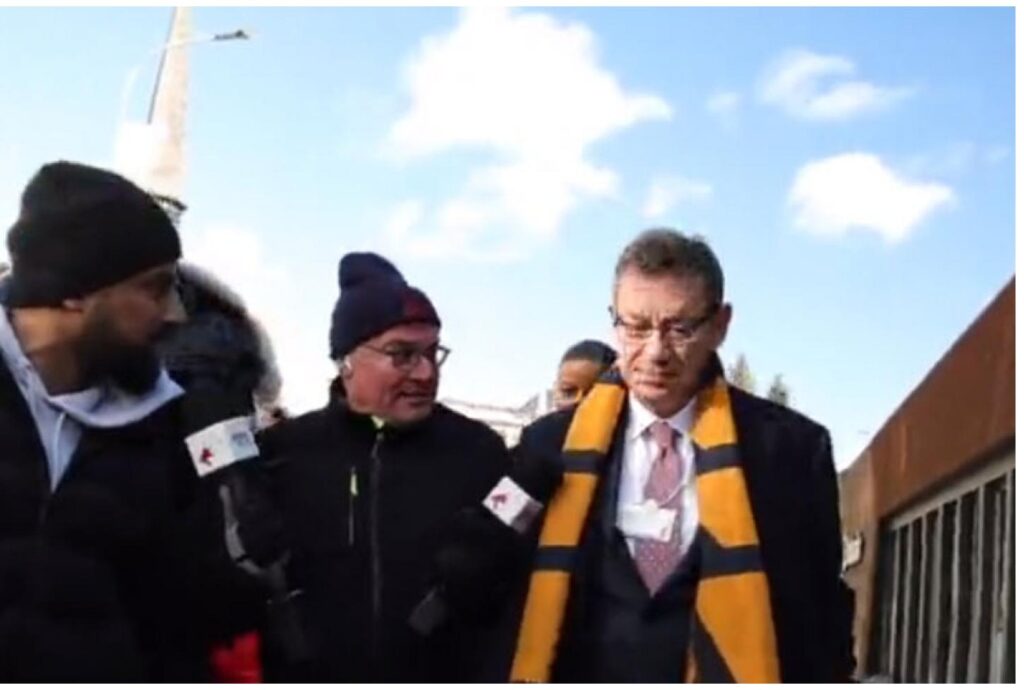
Albert Bourla, the Chief Executive Officer of Pfizer, was intercepted by new-media in Davos, Switzerland. It quickly became clear Mr. Bourla was not prepared for the questions asked by citizen journalist media as opposed legacy mass-media lapdogs. Video below shows the encounter.
Reporter Ezra Levant of Rebel News made the initial interception outside the World Economic Forum event in Davos, Switzerland. Mr. Levant was quickly joined by Avi Yemeni, also of Rebel News, but from their Australia outlet. Here’s an Excerpt:
Levant: Mr. Bourla, can I ask you when did you know that the vaccines didn’t stop transmission? How long did you know that without saying it publicly? We now know that the vaccines didn’t stop transmission, but why did you keep it secret? You said it was 100% effective, then 90%, then 80%, then 70%. But we now know that the vaccines do not stop transmission. Why did you keep that secret?
Bourla: Have a nice day
Levant: I won’t have a nice day until I know the answer. Why did you keep it a secret that your vaccine did not stop transmission?
Yemini: Is it time to apologize to the world, sir? To give refunds back to the countries that poured all their money into your vaccine that doesn’t work, your ineffective vaccine? Are you not ashamed of what you’ve done in the last couple of years?
Levant: Do you have apologies to the public, sir?
Yemini: Are you proud of it? You’ve made millions on the backs of people’s entire livelihoods. How does that feel to walk the streets as a millionaire? On the backs of the regular person at home in Australia, in England, and Canada?
Levant: What do you think about on your yacht, sir? What do you think about on your private jet? Are you worried about product liability? Are you worried about myocarditis? What do you have to say about young men dropping dead of heart attacks every day? Why won’t you answer these basic questions?
Yemini: Do you think you should be charged criminally for some of the criminal behavior you’ve obviously been a part of?
Levant: How much money have you personally made off the vaccine?
Yemini: How many boosters do you think it’ll take for you to be happy enough with your earnings?
Levant: Who did you meet with here in secret? Will you disclose who you met with? Who did you pay commissions to? In the past, Pfizer has paid $2.3 billion in fines for deceptive marketing. Have you engaged in that same conduct again? Are you under investigation like you were before for your deceptive marketing?
Yemini: If any other product in the world doesn’t work as promised, you get a refund. Should you not refund to countries that laid out billions for your ineffective vaccine?
Levant: Are you used to only sympathetic media? So you don’t know how to answer any questions.
Yemini: Shame on you.
Levant: Shame on you.
VIDEO
The video below was posted to social media. Within minutes, it _seemed_ to get “shadow banned” as viewership each minute went from 70,000, down to 50,000 and continued dropping. We publish the video here pursuant to exception to the U.S. Copyright Law which exists for news purposes:
HAL TURNER COMMENTARY
You know, I am REALLY proud of those two citizen journalists. I don’t even know them, have never met or spoken with them, yet I feel PROUD to know they’re in this profession. THIS is what investigative reporting _should_ be on controversial and important topics.
For my part, I would have asked “Mr. Bourla, how do you feel about your vaccine killing people and ruining their lives with chronic disabilities for money?” and, “How do you sleep at night knowing that you’ve killed babies, and are STILL in the process of killing babies with your vaccines?” “Are you going to pay families back for their loses?”
Or perhaps: Albert at what point did you become aware that your product is killing kids?
At what point did you become aware it was linked to stillbirths and the deaths of the unborn?
At what point did you become aware that it was linked to heart attacks, strokes, and turbo cancer?
At what point did you realize the vaccine is sterilizing healthy young men and women so they cannot have children?
Lord knows I could go on and on and on.
Kudos to the guys at Rebel Media for what they accomplished. In one fell swoop, they showed the real questions being asked by common folks all over the world, and let the world see a fat-cat Billionaire devoid of answers while a product his company produces continues to harm people all over the world.
China had banned Google, Amazon, Facebook, Snapchat, YouTube, Discord, WhatsApp, Whisper, and pretty much every single major US website. Then made a Chinese knockoff that gives the CCP complete access. Why should anyone defend TikTok?
China has banned nothing in China and in the world.
Amazon, Facebook, Snapchat, YouTube, Discord, WhatsApp, Whisper, and pretty much every single major US website refuse to follow the Chinese laws to operate their operations in China, this they have not been approved by the Chinese laws for these businesses to operate in China.
It is the US who has blocked all the free international media and internet such as the free Russian international media and internet.
As a result, all Americans have been living in their totally isolated, completely censored and lying media. Americans know nothing about the free world, but the US style of democratic nonsense and disinformation.
Michael Hudson has a nice lecture on GDP and why it’s a bad metric these days
Smart deterrence: China’s AI-warfare plan for Taiwan
Chinese military experts are reportedly exploring “smart deterrence” concepts, marking a significant evolution in China’s use of artificial intelligence (AI) and other emerging technologies from tactical and operational military levels to influence strategic-level decision-making.
This week, South China Morning Post reported that China could become a leader in so-called “intelligent warfare”, drawing on advanced technologies such as AI, cloud computing, big data analytics and cyber offense and defense.
Ni Yongjie, deputy director of the Shanghai Institute of Taiwan Studies, opined in the peer-reviewed journal Cross-Strait Taiwan Studies that China should use AI and other enabling technologies to deter the US and pro-independence factions in Taiwan, in addition to blockade exercises around the self-governing island, the South China Morning Post said.
Ni also wrote that smart deterrence is already being studied in Chinese military circles. He stated that China should normalize military exercises beyond the median line, the de facto sea border separating China from Taiwan, approaching the baselines of the latter’s territorial waters and cutting off maritime transport.
He also says that such exercises would be a powerful deterrent against Taiwan’s independence and foreign intervention, in addition to nuclear and conventional deterrence.
Ni’s suggestion to normalize military exercises off Taiwan aligns with Asia Times’ previous assessment that China has enacted a long-term and flexible strategy for the self-governing island.
This strategy involves periodic military exercises that amount to blockades, with a tighter military noose increasing the threat level. Moreover, it sends the message that any large military exercise could quickly be the real thing – an indefinite blockade of Taiwan to starve it into submission.
Apart from staging military exercises near the baselines of Taiwan’s territorial waters, Ni stated that China should hold similar exercises in the Spratly Islands in the South China Sea and Dongsha Island, which Taiwan controls.
In addition to blockades, Ni called for the use of economic, legal, psychological and cyber tools to deter Taiwan’s pro-independence factions while giving punitive examples of regulating cross-strait trade, stopping imports of agricultural products and halting the two sides’ 2010 free trade agreement.
Smart deterrence adds a cognitive aspect to China’s strategy for Taiwan, as deterring the latter from declaring independence by military and economic threats alone may not be sufficient.
As noted by an October 2022 policy brief by the University of San Diego’s 21st Century China Center, China has long been able to threaten Taiwan with severe military and economic consequences should it declare independence, but has not been able to convince the population that refraining from taking steps to independence will be met with restraint, rather than reunification on Beijing’s terms.
Other expert opinion about China’s approach towards the self-governing island comes to mixed conclusions. A September 2022 survey of China experts by the Center of Strategic and International Studies (CSIS) shows that China is determined to reunify with Taiwan, but needs a coherent strategy.
The CSIS survey also says that Chinese President Xi Jinping still believes there are non-violent avenues for reunification but states that the potential for a Taiwan Strait conflict is real, as China assumes the US will intervene in the event of a conflict.
A 2020 study by RAND outlines the evolution of China’s military strategic and operational concepts from the aftermath of the Korean War to the present. The study shows that China’s military strategic and operational concepts have changed from fighting an imminent conventional war or major nuclear war with positional offense and mobile defense to active defense relying on information dominance and target-centric warfare.
However, China’s strategic and operational concepts may have already evolved beyond mere information dominance and target-centric warfare. A September 2020 US Department of Defense (DOD) report to Congress notes that China has been moving from “informationized” warfare to “intelligentized” warfare, with enabling technologies increasing the speed of future combat.
The source notes that under informationized warfare, China’s military strategists believe that victory in future wars depends on which side can observe, orient, decide and act faster.
In that connection, a November 2022 US DOD report to Congress notes that China’s intelligentized warfare concept aims to seize control of the information domain to deter or manage a conflict by destroying an adversary’s access to information.
The source also mentions that China has been honing its “Cognitive Domain Operations” (CDO) concept, adapting its previous concepts of public opinion and psychological warfare to the information domain using enabling technologies such as AI.
China’s previous concept of informationized warfare may thus be seen as too focused on warfare’s military and kinetic aspects. In contrast, its succeeding concept of intelligentized warfare expands the application of emerging technologies into the cognitive domain at the operational level.
As such, China may be trying to scale up its intelligentized warfare concept to the strategic level, referring to the stretched concept as smart deterrence. This approach follows a bottom-up hindsight evolution to military strategy, as technology often moves ahead of tactics and strategy.
Narratives will play a key role in smart deterrence, with China portraying its approach to Taiwan as a domestic issue while the US frames it as a struggle between democracy and autocracy, with both sides gaining supporters and detractors. Through smart deterrence, China would aim to influence Taiwan’s center of gravity – its society – to erode its will to resist via disinformation aimed at demoralization.
Asia Times has previously noted that while China has devised numerous military strategic and operational concepts, including informationized and intelligentized warfare, China has not fought a conventional war since the disastrous 1979 Sino-Vietnamese War.
As these concepts remain untested, it is unclear if China has an established military strategy or operational concept to fall back on should its plan for absorbing Taiwan without a fight through smart deterrence ultimately fail.
What’s It Like To Chew On Coca Leaves?
So I’ve been to Peru many times, beautiful country, and each time I’ve used coca leaf, which is abundant, cheap, and used often here, but mostly in the form of tea, although I did put it in my mouth to “chew” it before but without the base needed to extract the alkaloids (one being cocaine, in tiny amounts).
Anyhow this time I did use both lime (comes with the bag of coca if you ask) and sodium bicarbonate to activate the alkaloids whilst holding the leafs in your mouth. I’ll outline my experiences below:
Coca tea (Mate de coca)
Extremely common here in Peru, used for altitude sickness and also just like you would use coffee. It’s light, not even as strong as coffee, but less taxing. I’d compare it to black tea, although again it’s a bit different.
Increased energy, more wakefulness (although definitely less than caffeine), and a slight mood uplift, without any noticeable comedown, nor any stomach issues (my stomach is sensitive and tea and coffee both are slightly uncomfortable to it).
It’s nice, definitely good for the high altitudes here, but nothing special, what’s noteworthy is that there doesn’t seem to be any tolerance, likely due to how light the effects are.
“Chewing” coca without a base to extract the alkaloids
“Chewing” is in quotes, as this is what it’s commonly referred to as, but really you just hold the leafs in the side of your mouth letting your saliva build up. Previous times I was here I didn’t realize the importance of the lime/sodium bicarbonate for this process. It’s slightly stronger than the tea, but the effects are fairly similar and it’s far less enjoyable.
“Chewing” coca with a base to extract the alkaloids, including a small amount of cocaine and some of its metabolites
Far far more potent, a whole different ball game. I can’t and won’t compare it to cocaine, as it doesn’t compare to it despite the similar effects.
The potency, onset, and just general feeling is much much different. From what I’ve read (feel free to google) this is mainly due to the lower quantities of cocaine actually consumed, combined with the much slower intake.
You first start feeling your mouth go numb, if you have enough leafs your whole tongue, gums and side of your mouth your holding it in will go numb. It’s important not to swallow your saliva as your stomach breaks down most of it, the effects come from your it entering your bloodstream through your capillaries in your mouth.
After about 10 – 15 minutes you feel more energized, more wakeful, and far more cheerful, I’d almost call it euphoric but it’s slightly less than that, but only slightly.
Your mood is significantly uplifted. It also stems your appetite. Whilst I can’t compare it to cocaine, nor can I too caffeine as the mood uplift is just far far better.
The effects peak after about 30 – 40 minutes of holding it in your mouth, you can then spit it out and redose, I’ve done this all day on a Trek and it seemingly works pretty much as strong each and every time.
The comedown from just doing it a couple of times is almost nothing, quite amazingling. You do come back to normal after about an hour of spitting it out, but mostly you are a little more tired, actually I have felt, again with normal usage, quite sleepy after it.
Taking it to the max, as I have, using it all day, you will have problems sleeping and a noteworthy, but not large, negative affect on your mood. The next day you will be absolutely fine though.
Another issue with using it too much is that your mouth can hurt quite a lot the next day, basically because your mouth was completely numb all day and you bite your tongue or excessively press the coca against your mouth without noticing it. This took two days to go away after using it almost all day for a three day hike.
It also sobres you up quite a bit if you’re drinking, really quite amazing how similar, yet far less powerful) the effects are to cocaine.
Many workers use it here, and I now know why. Taxi drives, for example, use it to drive all night. This makes perfect sense as it keeps you awake.
I met miners who would use it to avoid eating until the evening, again this makes perfect sense, it definitely suppresses your appetite. People on the farm use it to work during the day, again makes perfect sense as it increases your ability to strenuous exercise quite noticeably.
Overall I find it to be really really nice, the biggest issue is the method of consuming, it’s obvious you are doing it (mouth full of leaves, teeth as well), and it does lead to a sore mouth if overusing.
Miracle a poor cat was buried so deep in the snow that rescuer found her just in time
Short video at one minute 20 seconds.
Be the Rufus!
The true cost of “Made in the USA” Levi’s? $178
By Patrick Winn
.
BANGKOK, Thailand — Want a “Made in the USA” tag stitched inside your iconic Levi’s 501 jeans?
Your patriotism will cost you.
In the outsourcing era, all Levi’s jeans are stitched outside America with one exception: a single line of jeans produced at a factory called “White Oak” in Greensboro, NC. The mill is staffed by old hands who’ve narrowly survived the American garment manufacturing industry’s collapse.
Levi’s ad copy tells you that the jeans are “handcrafted by our faithful friends at the White Oak denim mill” and “proudly made in the red, white and blue” before reminding you that 501 jeans are “the ultimate icon of American culture.”
If you’re feeling overrun with American pride, I hope your pants-shopping budget can keep up with your patriotic zeal.
The standard-issue version of these 501 jeans costs a whopping $178. (Though, as I write this in early September, you can acquire a much cheaper version if you’re self-assured enough to wear purple jeans: a pair in the color “eggplant” sell for $58. A pair of “crushed wine” 501s is going for $138.)
In the world of denim, a “Made in the USA” tag has become a novelty. The garment industry’s economies of scale are long gone.
The outcome: it now costs the equivalent of a car payment to buy jeans, sourced from a US factory doling out decent pay and benefits, from a major apparel brand. This is actually cheap compared to the $300 to $400 fashionistas pay for celebrity-endorsed luxury jeans handcrafted in L.A.
That doesn’t mean affordable “Made in the USA” jeans have gone extinct.
Though lacking strings of retail outlets and huge advertising budgets, little-known brands are quietly producing affordable US-made jeans.
A pair of Gusset Jeans, made in Georgia, will cost you $55.95.
A pair of Texas Jeans, made in North Carolina, goes for $29.99.
Neither are shy about extolling their folksy, American bonafides. Texas Jeans even produces a “conceal and carry” line stitched to accommodate hidden pistols.
These brands are hardly hip but they are American through and through: even the buttons and denim are sourced stateside. The same can’t be said for the “Made in the USA” Levi’s, which are “meticulously crafted” in America — out of “imported fabric.”
By suspending visas for South Koreans, Beijing defends its legitimate rights on the principle of reciprocity: experts
Health workers guide travelers from China at a COVID-19 testing center at Incheon International Airport in South Korea on January 3. Photo: VCG
China imposed its first countermeasure on Tuesday toward discriminatory and unnecessary travel restrictions against travelers from China by suspending short-term visas for South Korean citizens who wants to visit China. The latest measure is considered as China’s direct and reasonable response to protect its own legitimate interests, particularly after some countries are continuing hyping up China’s epidemic situation by putting travel restrictions for political manipulation despite that many public health experts around the globe have criticized it as a “toxic trend.”
China suspends issuing short-term visas for South Korean citizens to travel to China for visit, business, tourism, medical treatment, transit or other personal affairs, with the new adjustment taking effect starting Tuesday, the Chinese Embassy in South Korea said in a statement released on Tuesday.
targeting travelers from China, the statement said.
Following the move by the Chinese Embassy in South Korea, the Chinese Embassy in Japan also issued a notice on Tuesday to suspended the issuing of ordinary visas for Japanese citizens who want to travel to China without notifying a date for resumption.
The US, Japan and South Korea are among the countries that had announced restrictions on travelers from China, citing concerns that the current surge of COVID-19 cases in China could lead to the emergence of new variants.
When asked about whether China also suspended visa application for Japanese citizens who plan to travel to China, Wang Wenbin, spokesperson of the Chinese Foreign Ministry, told a routine press conference on Tuesday that since China adjusted its COVID management and unveiled the resumption of people-to-people exchanges between China and other countries and regions, many countries have welcomed Chinese travelers but a handful of countries adopted entry restrictions against travelers from China.
China holds the sincerest attitude, with adhering to the fact and fully communicating with relevant countries, introducing in detail the scientific basis and reasons for China’s optimization and adjustment of epidemic prevention measures as well as domestic epidemic situation, Wang noted. “But regrettably, some countries ignore science, facts and their own situation by imposing travel curbs against China, toward which China firmly opposes and takes countermeasures.”
On January 2, South Korea tightened rules on incoming travelers from China, including allowing them only one port of entry – the Incheon International Airport – and performing COVID-19 tests on passengers after they disembark, Korea JoongAng Daily reported on Monday.
In addition, people traveling from China are required to submit negative COVID test results before boarding the plane to Seoul. This also applies to people coming from Hong Kong and Macao, the JoongAng Daily report said.
Japan also further tightened border controls for travelers from China on Sunday by requiring proof of COVID negative test results, which should be taken 72 hours prior to departure, according to media reports.
The travel restriction has been criticized by health experts from across globe as logistically cumbersome, and a toxic trend. Many countries, unlike the US-led allies including Japan and South Korea, warmly welcome China’s adjustment and reopening without putting any extra measures targeting travelers from China, striking a sharp contrast with those tougher rules, which were also called “unacceptable” toward which China will take corresponding measures with the principle of reciprocity.
Legitimate defense
Relations between countries must be built based on mutual respect and equality, which has been recognized as international norms, Li Haidong, a professor at the Institute of International Relations at the China Foreign Affairs University, told the Global Times on Tuesday.
Certain countries including South Korea and the US have come up with an idea to slander and question China’s epidemic response measures, and such move resulted in the international communities’ query toward China’s COVID-19 response, Li said.
“China’s latest countermeasures on visas are a legitimate demand which is reasonable and can better protect our own interests,” Li said.
In recent days, news that travelers from China have to take a yellow badge (for short-term visa holders) before entry has gained wide attention from Chinese netizens, with more than 190 million views on Chinese twitter-like Sina Weibo as of press time on Tuesday. Some netizens shared their unwelcomed and unsmooth experiences when arriving in South Korea such as mandatory nucleic acid testing, according to media reports.
For example, a large number of South Korean reporters were filming travelers from China when they were forced to wear the yellow badge and some reporters even followed those Chinese travelers like “tracking criminals,” according to some posts circulating online.
“South Korea’s entry policy toward travelers from China is really the most unfriendly and strictest in the world. Entry inspection, wait for report for two to five hours or even longer, and mandatory quarantine at traveler’s own expense for a week if tested positive,” a netizen said.
Many Chinese netizens have expressed their discontent over the measures carried out by South Korea toward passengers from China. “I suggest you to delay your travel plan to South Korea,” one netizen wrote.
There is absolutely no need to impose travel restrictions on arrivals from Hong Kong and the Chinese mainland, Dennis Lam, a Hong Kong lawmaker and a deputy to the National People’s Congress, told the Global Times. When epidemic prevention measures have been eased across the globe, the mainland and Hong Kong have no higher possibility for new variants than any other countries or regions, Lam said.
“It has been three years since the outbreak of the COVID-19 epidemic, and large-scale epidemics and infections have occurred all over the world with most of the global population forming a certain immunity against the virus through self-infection or vaccination, so the virulence of the new variants is no longer as bad as at the beginning of the epidemic,” Lam remarked.
On Tuesday, Chinese Foreign Ministry spokesperson Wang said “We once again call on relevant countries to make sure that their COVID response measures are fact-based, science-based and proportionate. COVID response should not be used as a pretext for political manipulation. It should not be discriminatory and should not affect normal cross-border travel and people-to-people exchange and cooperation.”
Leo Poon Lit-man of the University of Hong Kong, who is also an expert in various World Health Organization Working Groups for SARS-CoV-2 and influenza viruses, said that it is possible surging caseload could lead to generation of new variants, “but this possibility can also be applied in other countries and cities, for example, the XBB.1.5 subvariant evolved outside China,” and there’s a major difference between the variants circulating in and outside China.
It is important to continue to do surveillance inside China and share this information with other countries, said Poon, warning that it is also equally important for other countries to do the same level of surveillance. “So whenever there’s a new variant coming out in around the globe, we can able to share and exchange the information in a timely manner.”
Despite a few countries who have imposed unreasonable travel curbs out of political purposes, many countries took a much more rational attitude.
For example, Singaporean Health Minister Ong Ye Kung explained on Monday that Singapore will not impose pre-departure tests on travelers from China as severe cases can originate from anywhere.
Putting up such requirements, he said, raises the question of travelers from other regions that contribute more infections and severe case, Channel News Asia reported.
“How about local community settings which we know are conducive to spreading the disease and can drive infection numbers and severe cases?” Mr Ong asked.
“By triggering PDT (pre-departure test requirements) on travelers from one part of the world experiencing high infection numbers, are we contributing to an international precedent of imposing tests on travelers from countries going through an infection wave? How will other countries treat travelers from Singapore when we encounter another infection wave?”
What It’s Like To Be Cheated On By Someone You Love
Have you ever balled up your fists so tight for so long that your knuckles got all white, your nails started digging into your palms, and you were afraid you might be drawing blood? When letting your hands slowly open up feels almost unnatural after having them so tightly wound for so long? It kind of feels like that.
It’s a pain which is at once deeply frustrating and oddly self-sustaining. You feed into the anger because it comforts you, in a strange way. Because to stop being angry, to stop clenching your fists, to loosen up for a minute and let go, would mean you have to feel the actual undercurrent of your anger: your pain.
Finding out, of course, is most accurately described as an unexpected punch to the stomach.
There are some people who have been taken aside and told with composure and elegance that they have been betrayed in the most profound way they could be. “I made a mistake,” the culprit might say, or, “I found someone else.”
Depending on the intensity of the illicit relationship, the confession could range from the deeply apologetic to the coldly indifferent.
But for those who find out because they stumbled across the evidence, or found it after frantic hours of terrified searching, the punch is strong enough to force the air entirely out of the lungs.
The searching is perhaps the worst part, the breathless moments before the floor falls out from underneath you.
That precarious dangling in the purgatory where you at once want to find something — anything — to justify your gnawing suspicions, and you want to be relieved with a realization that it was all in your head.
In many ways, though, once that frantic searching has begun, there is no way to be satisfied that you imagined it all.
If you have been driven to the point of checking through messages or looking in pockets or asking potential witnesses, if you have allowed yourself to come to the ugly, unflattering point of invading the privacy of the person you love to prove yourself right, you have already lost.
And you know it. You know you have become what you had always condescendingly looked down upon, the couple who is as untrusting and dysfunctional as they are unable to admit it.
But somehow, finding that shred of evidence or hearing the confirmation which proves you right in the worst way possible is almost a triumphant moment of victory. You have won, and you have lost everything. But for at least those few precious milliseconds of “a-ha!” you have gotten exactly what you wanted.
And then comes the fall, the bottomless descent into every ugly moment of self-doubt and self-loathing in an attempt to find a justification or explanation which could never exist.
What did you do wrong? What does the other person do better? Do they smell better? Taste better? Have more interesting things to say at parties which don’t involve sarcastic, ill-timed jokes?
Suddenly, everything you are is wrong, every aspect of yourself is something you want to peel off and throw on the floor behind you.
And the ignorant person you were before, the one blissfully unaware of all that was happening behind a turned back, is suddenly both laughable and enviable.
You cringe imagining all of the things that were happening when you weren’t looking, but wish that you could return to a moment where not knowing was a possibility.
But that person — the ignorant-yet-blissful person who was only so happy to be unwittingly cheated on — was ultimately not good enough to keep your love.
And that is the real pain, the idea that there was something that was yours to keep which you were unable to hold a tight enough grip on.
You delude yourself into believing that there was anything you could have done to prevent it, and yet never stop to understand that it was entirely your partner’s choice. If anyone could have stopped anything, it was your partner.
Somehow, placing the blame where it truly belongs when cheated on is about as futile as feeling positively towards the “other.”
At the end of the day, there is always something to find fault in within yourself, something which can be identified as the true culprit in the infidelity, instead of the beloved cheater. “If only I were thinner” somehow makes more sense than “if only he wasn’t a cheater.”
As you unclench that fist, let go of all of every minor pain you’ve kept close to your chest so as to not have to see it in its full splendor, you finally exhale.
You distance yourself from the betrayal and start to believe — the way a baby bird might open its wings for the first time — that not everyone must be monitored with the distrusting cunning of a fox.
You accept that you may not have been able to stop it, or that you certainly didn’t deserve it. And while there will always be a part of you which longs to look twice at the inbox of a cellphone, who can’t believe that someone can be honest for uninterrupted years at a time, it is up to all of us to push those thoughts away.
“If they are going to do it,” we must say, “Ruining myself in worry and doubt will not stop them.”
With Ukraine Situation Getting Worse, What Would Happen if Russian Nuke Hit New York City . . .
The situation between Russia and Ukraine grows worse each day because the United States and its NATO vassals, continue to escalate the weapons given to Ukraine. At some point, Russia may have to tell the U.S. to stop or be made to stop. Of course, the U.S. will not back down, and as such, the missiles may fly. Here’s what scientists say will happen if a Russian nuke hits New York City . . .
Russian intercontinental ballistic missiles are believed to carry a total of approximately 1,000 strategic nuclear warheads that can hit the US less than 30 minutes after being launched. Of this total, about 700 warheads are rated at 800 kilotons; that is, each has the explosive power of 800,000 tons of TNT. What follows is a description of the consequences of the detonation of a single such warhead over midtown Manhattan, in the heart of New York City.
The initial fireball. The warhead would probably be detonated slightly more than a mile above the city, to maximize the damage created by its blast wave. Within a few tenths of millionths of a second after detonation, the center of the warhead would reach a temperature of roughly 200 million degrees Fahrenheit (about 100 million degrees Celsius), or about four to five times the temperature at the center of the sun.
A ball of superheated air would form, initially expanding outward at millions of miles per hour. It would act like a fast-moving piston on the surrounding air, compressing it at the edge of the fireball and creating a shockwave of vast size and power.
After one second, the fireball would be roughly a mile in diameter. It would have cooled from its initial temperature of many millions of degrees to about 16,000 degrees Fahrenheit, roughly 4,000 degrees hotter than the surface of the sun.
On a clear day with average weather conditions, the enormous heat and light from the fireball would almost instantly ignite fires over a total area of about 100 square miles.
Hurricane of fire. Within seconds after the detonation, fires set within a few miles of the fireball would burn violently. These fires would force gigantic masses of heated air to rise, drawing cooler air from surrounding areas toward the center of the fire zone from all directions.
As the massive winds drove flames into areas where fires had not yet fully developed, the fires set by the detonation would begin to merge. Within tens of minutes of the detonation, fires from near and far would join to form a single, gigantic fire. The energy released by this mass fire would be 15 to 50 times greater than the energy produced by the nuclear detonation.
The mass fire, or firestorm, would quickly increase in intensity, heating enormous volumes of air that would rise at speeds approaching 300 miles per hour. This chimney effect would pull cool air from outside the fire zone towards the center of the fire at speeds of hundreds of miles per hour. These superheated ground winds of more than hurricane force would further intensify the fire. At the edge of the fire zone, the winds would be powerful enough to uproot trees three feet in diameter and suck people from outside the fire into it.
The inrushing winds would drive the flames from burning buildings horizontally along the ground, filling city streets with flames and firebrands, breaking in doors and windows, and causing the fire to jump, sometimes hundreds of feet, swallowing anything not already violently combusting.
These above-hurricane-force ground winds would have average air temperatures well above the boiling point of water. The targeted area would be transformed into a huge hurricane of fire, producing a lethal environment throughout the entire fire zone.
Ground zero: Midtown Manhattan. The fireball would vaporize the structures directly below it and produce an immense blast wave and high-speed winds, crushing even heavily built concrete structures within a couple miles of ground zero. The blast would tear apart high-rise buildings and expose their contents to the solar temperatures; it would spread fires by exposing ignitable surfaces, releasing flammable materials, and dispersing burning materials.
At the Empire State Building, Grand Central Station, the Chrysler Building, and St. Patrick’s Cathedral, about one half to three quarters of a mile from ground zero, light from the fireball would melt asphalt in the streets, burn paint off walls, and melt metal surfaces within a half second of the detonation. Roughly one second later, the blast wave and 750-mile-per-hour winds would arrive, flattening buildings and tossing burning cars into the air like leaves in a windstorm. Throughout Midtown, the interiors of vehicles and buildings in line of sight of the fireball would explode into flames.
Slightly more than a mile from ground zero are the neighborhoods of Chelsea, Midtown East, and Lenox Hill, as well as the United Nations; at this distance, for a split second the fireball would shine 10,000 times brighter than a desert sun at noon. All combustible materials illuminated by the fireball would spew fire and black smoke.
Grass, vegetation, and leaves on trees would explode into flames; the surface of the ground would explode into superheated dust. Any flammable material inside buildings (paper, curtains, upholstery) that was directly exposed to the fireball would burst into flame. The surfaces of the bronze statues in front of the UN would melt; marble surfaces exposed to the fireball would crack, pop, and possibly evaporate.
At this distance from the fireball, it would take about four seconds for the blast wave to arrive. As it passed over, the blast wave would engulf all structures and crush them; it would generate ferocious winds of 400 to 500 miles per hour that would persist for a few seconds
The high winds would tear structural elements from buildings and cause them to disintegrate explosively into smaller pieces. Some of these pieces would become destructive projectiles, causing further damage. The superheated, dust-laden winds would be strong enough to overturn trucks and buses.
Two miles from ground zero, the Metropolitan Museum of Art, with all its magnificent historical treasures, would be obliterated. Two and half miles from ground zero, in Lower Manhattan, the East Village, and Stuyvesant Town, the fireball would appear 2,700 times brighter than a desert sun at noon. There, thermal radiation would melt and warp aluminum surfaces, ignite the tires of autos, and turn exposed skin to charcoal, before the blast wave arrived and ripped apart the buildings.
Three to nine miles from ground zero. Midtown is bordered by the relatively wide Hudson and East rivers, and fires would start simultaneously in large areas on both sides of these waterways (that is, in Queens and Brooklyn as well as Jersey City and West New York, NJ). Although the direction of the fiery winds in regions near the river would be modified by the water, the overall wind pattern from these huge neighboring fire zones would be similar to that of a single mass fire, with its center at Midtown, Manhattan.
Three miles from ground zero, in Union City, New Jersey, and Astoria, Queens, the fireball would be as bright as 1,900 suns and deliver more than five times the thermal energy deposited at the perimeter of the mass fire at Hiroshima. In Greenpoint, Brooklyn, and in the Civic Center of Lower Manhattan, clothes worn by people in the direct line of sight of the fireball would burst into flames or melt, and uncovered skin would be charred, causing third-degree burns and worse.
It would take 12 to 14 seconds for the blast wave to travel three miles after the fireball’s initial flash of light. At this distance, the blast wave would last for about three seconds and be accompanied by winds of 200 to 300 miles per hour. Residential structures would be destroyed; high-rises would be at least heavily damaged.
Fires would rage everywhere within five miles of ground zero. At a distance of 5.35 miles from the detonation, the light flash from the fireball would deliver twice the thermal energy experienced at the edge of the mass fire at Hiroshima. In Jersey City and Cliffside Park, and in Woodside in Queens, on Governors Island and in Harlem, the light and heat to surfaces would approximate that created by 600 desert suns at noon.
Wind speed at this distance would be 70 to 100 miles per hour. Buildings of heavy construction would suffer little structural damage, but all exterior windows would be shattered, and non-supporting interior walls and doors would be severely damaged or blown down. Black smoke would effuse from wood houses as paint burned off surfaces and furnishings ignited.
Six to seven miles from ground zero, from Moonachie, New Jersey, to Crown Heights, Brooklyn, from Yankee Stadium to Corona, Queens and Crown Heights, Brooklyn, the fireball would appear 300 times brighter than the desert sun at noon. Anyone in the direct light of the fireball would suffer third degree burns to their exposed skin. The firestorm could engulf neighborhoods as far as seven miles away from ground zero, since these outlying areas would receive the same amount of heat as did the areas at the edge of the mass fire at Hiroshima.
Nine miles from ground zero, in Hackensack, Bayonne, and Englewood, New Jersey, as well as in Richmond Hill, Queens, and Flatlands, Brooklyn, the fireball would be about 100 times brighter than the sun, bright enough to cause first- and second-degree burns to those in line of sight. About 36 seconds after the fireball, the shockwave would arrive and knock out all the windows, along with many interior building walls and some doors.
No survivors. Within tens of minutes, everything within approximately five to seven miles of Midtown Manhattan would be engulfed by a gigantic firestorm. The fire zone would cover a total area of 90 to 152 square miles (230 to 389 square kilometers). The firestorm would rage for three to six hours. Air temperatures in the fire zone would likely average 400 to 500 degrees Fahrenheit (200 to 260 Celsius).
After the fire burned out, the street pavement would be so hot that even tracked vehicles could not pass over it for days. Buried, unburned material from collapsed buildings throughout the fire zone could burst into flames when exposed to air—months after the firestorm had ended.
Those who tried to escape through the streets would have been incinerated by the hurricane-force winds filled with firebrands and flames. Even those able to find shelter in the lower-level sub-basements of massive buildings would likely suffocate from fire-generated gases or be cooked alive as their shelters heated to oven-like conditions.
The fire would extinguish all life and destroy almost everything else. Tens of miles downwind of the area of immediate destruction, radioactive fallout would begin to arrive within a few hours of the detonation.
But that is another story.
Baked Stuffed Papayas (Jamaica)

Ingredients
- 1 pound ground beef
- 1 medium onion, chopped
- 1 clove garlic, minced
- 1 (16 ounce) can whole tomatoes, drained
- 1 jalapeno pepper, minced
- 1/2 teaspoon salt
- 1/4 teaspoon pepper
- 4 (12 ounce) papayas
- 2 tablespoons grated Parmesan cheese
Instructions
- Cook and stir beef, onion and garlic in 10-inch skillet over medium heat until beef is light brown; drain. Stir in tomatoes, jalapeno pepper, salt and pepper; break up tomatoes with fork. Heat to boiling; reduce heat. Simmer uncovered until most of the liquid is evaporated, about 10 minutes.
- Cut papayas lengthwise into halves; remove seeds. Place about 1/3 cup beef mixture in each papaya half; sprinkle with cheese. Arrange in shallow roasting pan. Pour very hot water into pan to within 1 inch of tops of papaya halves.
- Bake uncovered at 350 degrees F until papayas are very tender and hot, about 30 minutes.
435,897,435,897 Free Roaming Spike Protein Molecules After COVID Vax Booster – Their Hearts Will NEVER Fully Recover from the “Vax”
There’s a new peer-reviewed research paper out regarding the COVID Vax. It’s bad. How bad? I’ve shown it to two physicians so far. One said he “had a seizure” reading it. The other said something worse.
Long story short: 436 BILLION copies of spike protein are found circulating freely in blood plasma, a month after the COVID (Gene therapy) vaccine.
In kids.
Their hearts, screeching in pain with Myocarditis, will never fully recover.
You knew that, didn’t you? But there is more than that . . . The graphic below, from this new study, shows the medical and scientific evidence:

Below is the damning part of the graphic. The vertical scale is a log scale. The line at about 15pg/ml is the limit of detection, which is why the blue dots are there. There are still up to 100 billion molecules of spike in those patients – 20 days later.
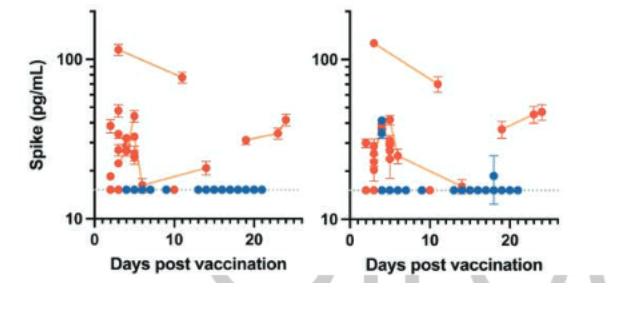
But in some of these cases the concentration of spike is RISING 20 days after vaccination (see the red lines going up), so we have no idea how much is actually circulating. Spike is toxic, particularly to the heart. If it’s not toxic why do we need a “vaccine” against it?
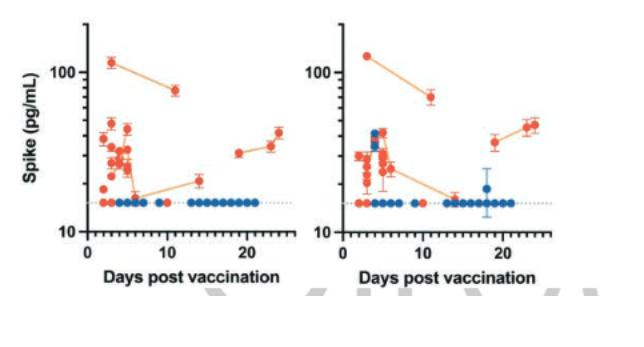
The authors of this new peer-reviewed study claim that the mean serum level of free spike protein in the patients with myocarditis was 34pg/ml. (There was less in the non-affected patients, but there was still a lot) How many molecules is that? Well there is about 3000ml of plasma in a 70kg male…
And the molecular weight of a spike protein monomer is 141kDa. That’s 2.34 e-19 grams. So 34pg/ml x 3000ml is a total of 102ng (102e-9) of spike. Divide by 2.34e-19 gives you… 435,897,435,897 molecules. Of a toxic protein. Circulating in a young adult.

It’s worth noting also that the blue dots in the graphic don’t indicate “no spike” – they are the lower limits of detection at 15pg/ml. That’s a lot of spike.

BUT… There are two other things that have come out of this paper.
The first is that the amount of spike protein circulating in the PLASMA (when we were told it didn’t leave the arm, remember) weeks after the injection is shocking. So this . . .
was a lie:

Yes, what you see above . . . what we were all TOLD . . . was a L I E.
The whole article in Conversation.edu from their “Researcher” @vasssssso was in fact a lie, so we’ve archived it. The claims in that article made by the authors have likely resulted in deaths of young adults. Look at the “partners” for the article – including RMIT again.
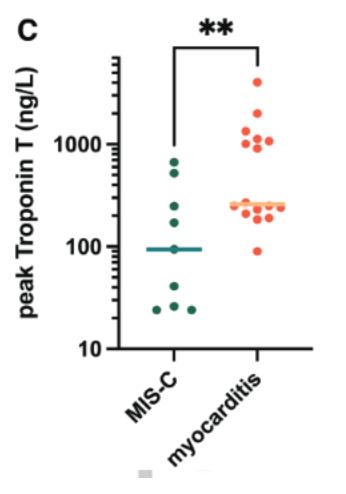
But the worst thing about this new peer-reviewed myocarditis study is this – and you might not have realized. The study showed, beyond a shadow of doubt, that the COVID “vaccine” was causing myocarditis, with elevated troponin (confirming heart damage).
Troponin is an enzyme given off by cardiac cells when they are injured or dying. That’s how Doctors can tell if a person is having a heart attack over a panic attack. If its an actual heart attack, there will be measurable Troponin in the blood. In cases of myocarditis, Troponin also occurs as heart cells are severely damaged -or dying – by the Spike Proteins.
You know, sometimes people have to do something BAD, to achieve something good. And this is no exception. You see, when the people doing this new peer-reviewed study saw the first few cases of Myocarditis, they should have STOPPED the study and sounded the alarm right away. You see, that was their duty. It was a duty as medical officers and as research officers. But to our knowledge they said nothing and kept recruiting for the study!
What mattered (to them) was finishing the study so they could publish. Of course, from the home of the #surgisphere authors, what else would you expect?
This is the environment they operate in:

WHAT THIS MEANS
First, this study was done and submitted for “peer-review” on May 26, 2022. It was ACCEPTED for publication (after peer-review) on November 23, 2022. So the world has known, as a matter of scientific research, these details, since May of last year. Yet no one . called for Vaccines to be HALTED.
They had scientific proof the vaccines were causing heart damage . . . myocarditis . . . which, incidentally, has a FIFTY PERCENT mortality rate within five years, and they said . . . nothing.
Want to know why? MONEY.
They can’t admit it’s potentially harmful and deadly.
They can’t suddenly stop the shots; To do so would be an admission of guilt.
So they’ll continue, pretending everything’s fine. In other words, doubling down on stupid
All those kids coming down with Myocarditis, have a fifty-fifty chance of DYING within the next five years. Oh, and the rest who took the vaccine and at least the first booster, the way things look right now, most of them (statistically) will be dead by the year 2027.
Hikers Find Dead Body In Tent, Revealing Chilling Mystery: The Solved Case of Mostly Harmless
I don’t think Vance was exactly a “kind” or “bad” person, just a complicated one. He was still a human being who was dealing with his own demons and the consequences of his past actions and guilt in his own way. So I hope he found some form of peace out there before dying.
https://youtu.be/QISwNN1k-_w

